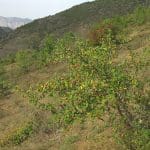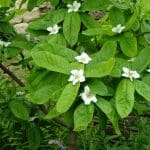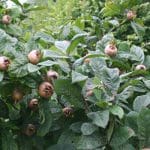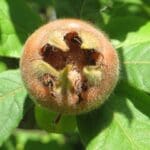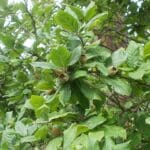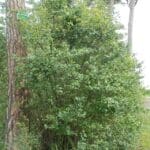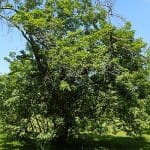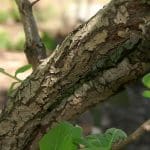Medlar / Autumn / Winter / Edible
Medlar are something that isn’t often eaten in the UK, it requires picking and letting to slightly ferment to produce a really nice caramel like fruit.
Common Names
Medlar, Common Medlar
Botanical Name
Mespilus germanica
Scientific Clasification
Kingdom – Plantae
Order – Rosales
Family – Rosaceae
Physical Characteristics of Medlar
Stems/Bark
They have a contorted, irregular shaped trunk. The bark is greyish brown with deep vertical cracks forming rectangular plates that tend to lift off.
The tree is thorny in its wild form and more shrub-like in size, growing to between 1.5 and 4m high, though in ideal conditions it can grow up to 8m tall. The diameter at breast height is usually between 20 and 35cm.
Leaves
The leaves are dark green, elliptic, wrinkly, 8-15cm long and 3-5cm wide. The leaves are densely hairy (pubescent) below and turn red in autumn before falling.
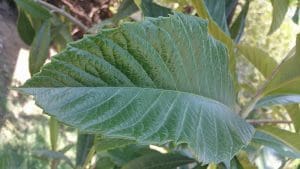
Flowers
The flowers are 2-5cm in diameter, have a short stalk and are terminal and single on short side shoots. They have five elongated, narrow sepals and five separate white or pale pink petals. Compared to other European fruit trees the Medlar flowers very late (May or June). The flowers are hermaphrodite and pollinated by bees.
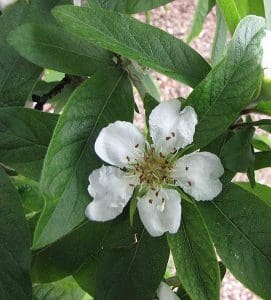
Seeds/Fruit
The fruit is a reddish-brown pome, like a large brown rosehip; 2-3cm in diameter (3-8cm in cultivated forms). It has wide-spreading, persistent sepals pointing inwards around a central pit, which gives a hollow appearance to the fruit and which has led to a number of less than polite nicknames over the years, such as “open-arse” and “monkey’s bottom”.
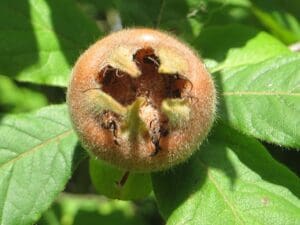
Habitat
Native of South-East Europe and South-West Asia where it has been cultivated for thousands of years. It was introduced to Western Europe by the Romans and was cultivated in England in medieval times. It was a commonly eaten fruit even in Victorian times but is now rarely eaten. It is not common but is found in old gardens and may have spread into woods in warmer areas.
They grow in a wide range of soil types and prefers fresh, well-drained loamy soils with a pH between 6 and 8. They require temperate and sub-Mediterranean climate conditions with warm summers and mild winters; late frosts hardly cause any damage.
Known Hazards
None known
Could be Confused with
The only thing I think could potentially look like a Medlar would be a Wild Apple, Medlars are quite a specific shape – also being known as the bum hole fruit.
Edible Uses
In the Mediterranean regions they can be eaten straight off the tree but, in the British climate, Medlar fruit only become edible when they are ‘bletted’ – made soft and half-rotten by frost or stored in dark, cool places such as in ventilated boxes lined with paper or straw. The flesh tastes like baked apple but with the consistency of chestnut pureé. It can be eaten raw with crème fraȋche, yoghurt or cheese or used to make jelly or curds.
Medlar fruit are rich in Vitamin C and B, potassium, calcium, phosphorus, magnesium and iron. They have traditionally been used in medicine for their diuretic and astringent properties.
Notes on Herbal uses
In traditional medicine, the fruit, leaves, and bark were used for various ailments, including stomach complaints, constipation, and urinary tract issues.
Extra notes from the Foragers
Prior to the widespread use of sugarcane, Medlar was a preferred sweet ingredient, but likely owing to the difficulty in processing, it fell out of favour.



